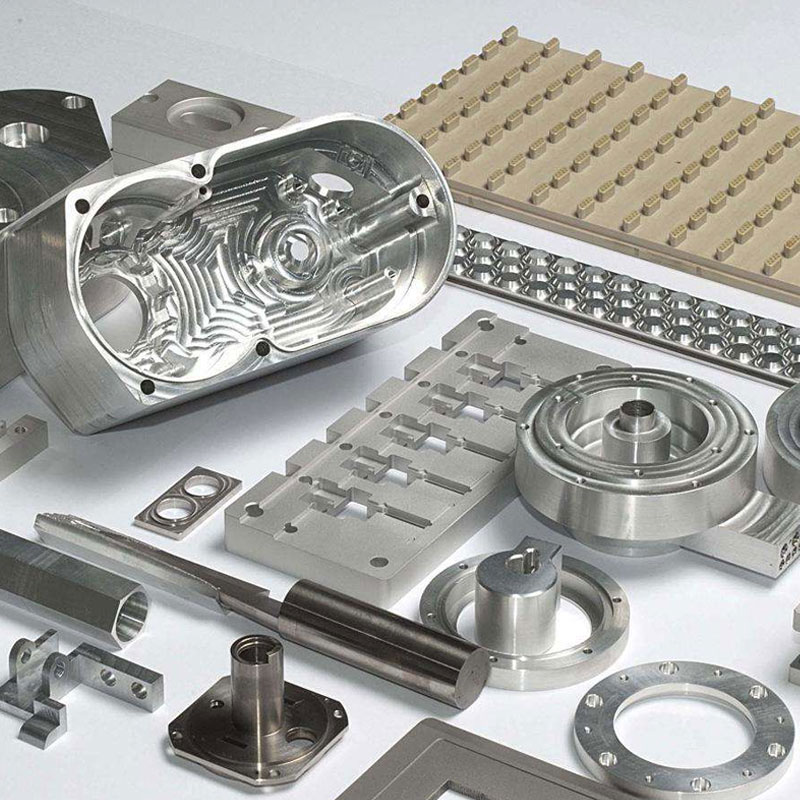In this era where user experience is highly valued, more and more mobile phone, notebook, and wearable device manufacturers are beginning to exert their strength on the shell material. In the field of mobile phones only, the materials of mobile phone casings are gradually transitioning from engineering plastics to metals. During the evolution of the material of the mobile phone shell, there have been many combinations: plastic and metal, glass and metal, all plastic, all glass, etc., but in the end, they have not covered the limelight of all metal materials. From the actual touch experience, the all-metal phone does have an outstanding experience in many aspects, both in appearance and feel are better than other materials.
At present, all metal shells of 3C products are basically processed by CNC (Computer numerical control machine tools, CNC). CNC has become an essential equipment for 3C shell manufacturers due to its high efficiency, high precision, and stable processing quality.
The all-metal integrated CNC machining process was first pioneered by Apple-aluminum plates are die-cast from cylindrical solid aluminum materials, and after precision machining, they are first cut into the prototype of an integrated fuselage. And various fine structures are milled out. This process includes nine CNC milling processes. After the nine processes, a precision one-piece housing is obtained.
Aluminum alloy CNC processing technology
Among the process steps that require cutting tools are:
Rough milling the inner cavity: rough milling the contour shape of the inner cavity of the mobile phone shell, and processing the inner cavity and the positioning column combined with the fixture well, which is crucial for the subsequent processing link.
Milling the antenna slot: Metal aluminum can shield (weaken) the radio frequency signal of the mobile phone, so it must go through the slotting method so that the signal can have a path of in and out. Therefore, milling the antenna slot is the most important and difficult step. The antenna slot must be milled evenly, and the necessary connection points must be maintained to ensure the strength and overall sense of the metal shell.
Precision milling arc surface: 3D shaping of metal aluminum alloy body, usually using cnc machining center to mill the arc contour, which is also the most time-consuming process.
Finish milling the side: The 3D arc of the metal body is milled by CNC, but there is still a circle of redundancy on the edge, so the side milling process is required, and then you can see the prototype of the metal shell.
Polishing: Use high-speed precision CNC machine tools, but can only achieve A1-A2 grade finish. To achieve subsequent processing needs, it needs to be polished to A0 grade finish, which can be mirror effect.
High-gloss: Using high-grade ultra-high-speed CNC machine tools to cut corners, this process is also called drilling or high-gloss processing.
Precision milling of the inner cavity: After the aluminum alloy has been processed in multiple steps, the metal shell has been formed, and then the excess material such as the positioning column used for fixture locking is removed to make the metal shell completely clean.
Milling the conductive position: the conductive effect of the aluminum alloy shell after anodizing will be poor, so you need to remove the local anodized film to expose the metal to obtain a good grounding effect, and you need to undergo another CNC treatment of the milling of the conductive position. .
Polishing: Polishing refers to the use of mechanical, chemical or electrochemical effects to reduce the surface roughness of the workpiece to obtain a bright, smooth surface processing method. The conventional polishing process is mechanical polishing and chemical polishing, which uses high-speed precision CNC machine tools for mechanical polishing to eliminate knife lines and prepare for subsequent sandblasting.
CNC machining tool for aluminum alloy parts
The most used tool for aluminum alloy CNC machining is the milling cutter. Milling cutters of different materials are used according to different process requirements. For example, high-speed steel milling cutters or carbide milling cutters are used for rough milling aluminum alloy parts. High-grade steel can be used for fine milling. Carbide milling cutters or diamond CDW302 milling cutters, high-gloss machining is recommended to use diamond CDW010 or CDW005 material milling cutters, chamfering cutters, high-gloss cutters, for mirror processing, it is recommended to choose diamond CDW850 or single crystal diamond milling cutters, chamfering Knife, milling blade, etc.







